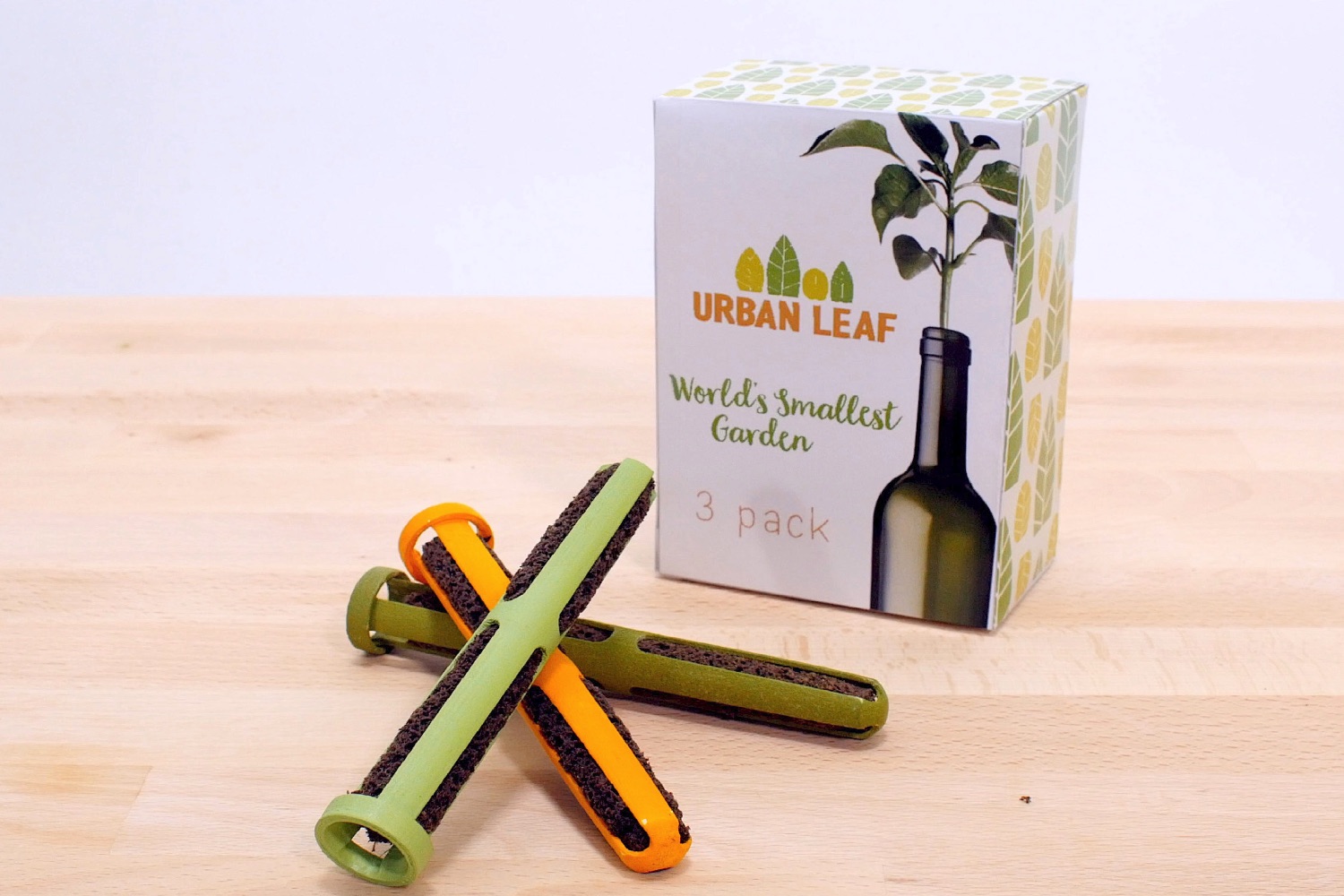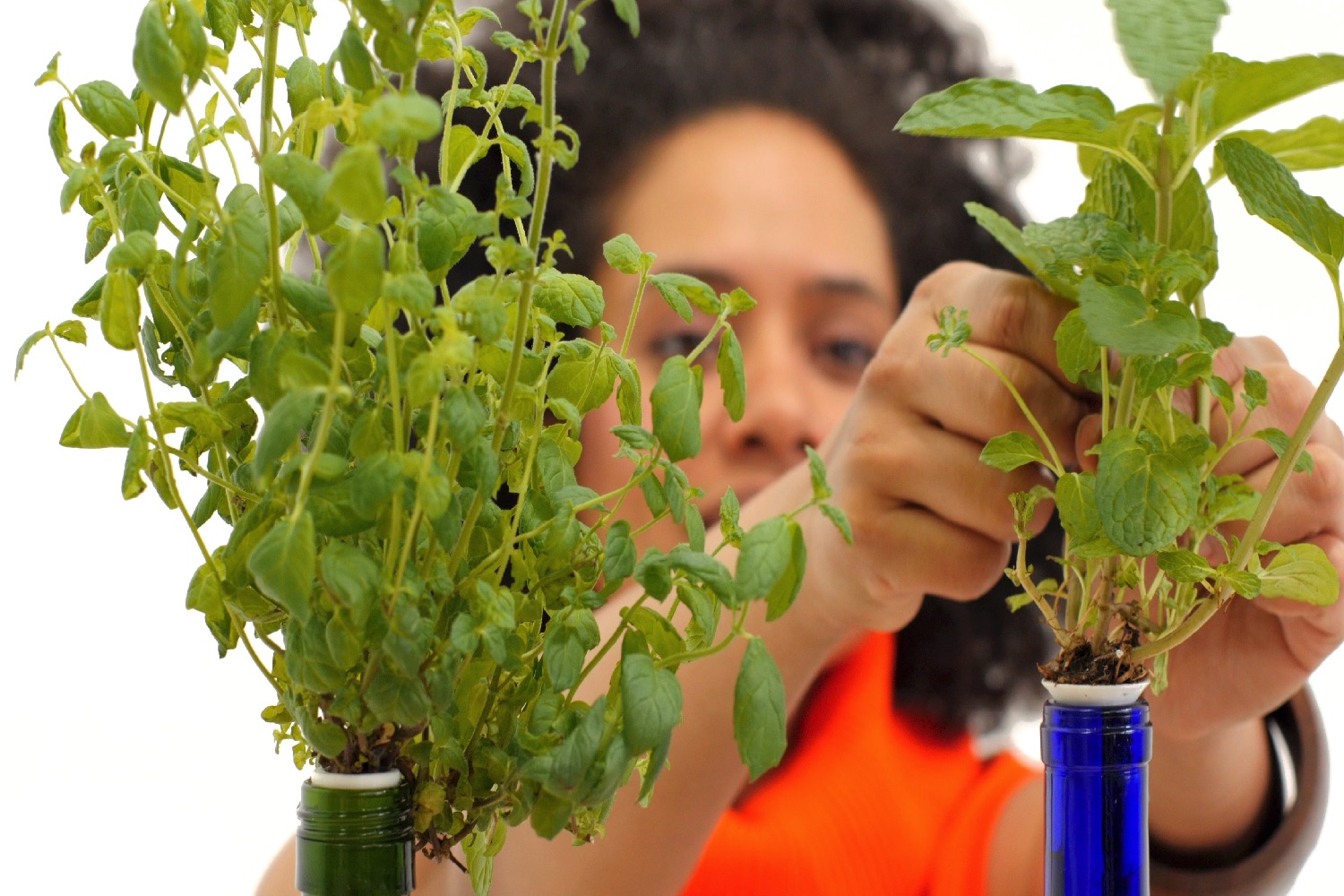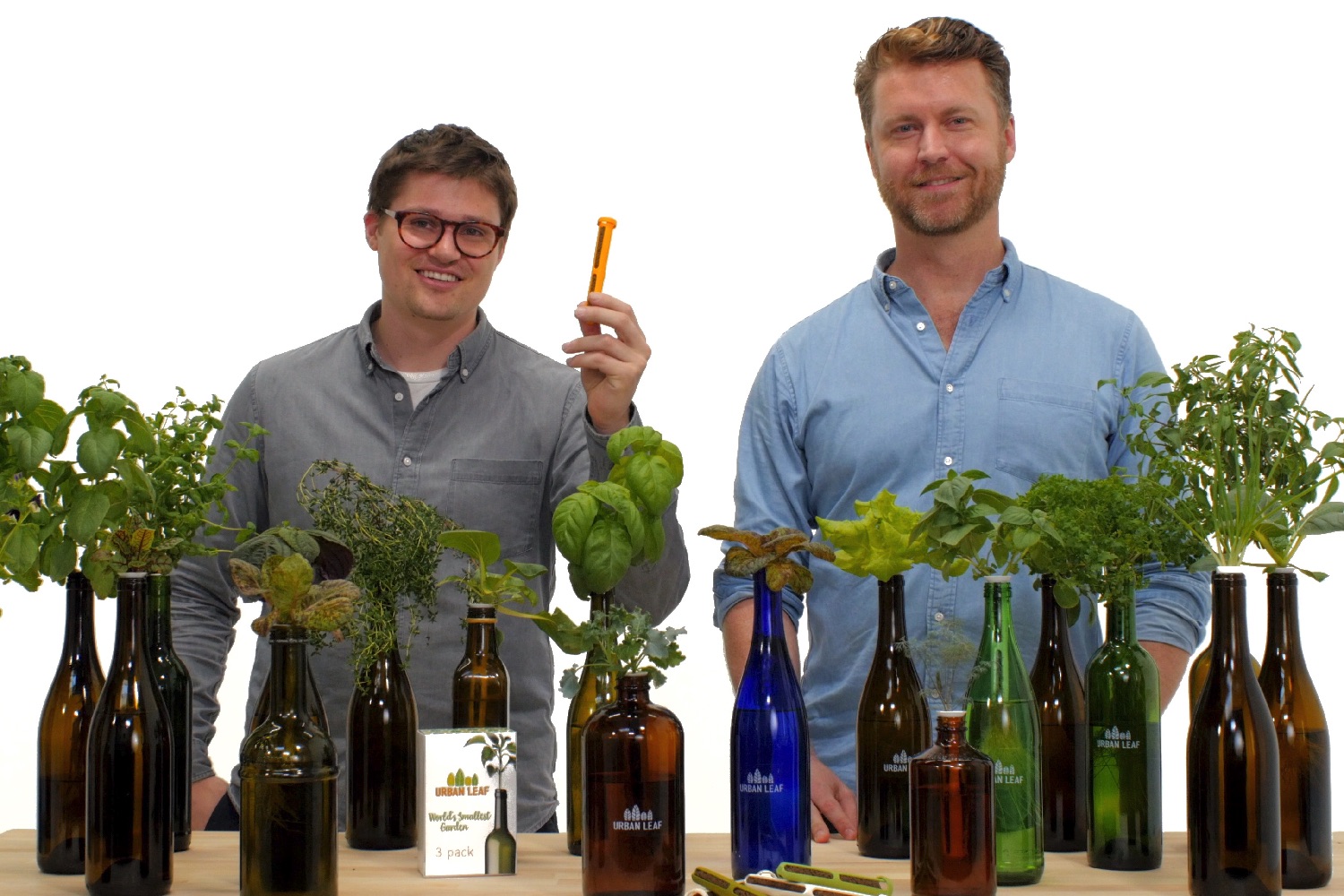A new Kickstarter project may be able to help with both of these desires. Billing itself as the World’s Smallest Garden, it promises to bring the joy of gardening to your home — even if you live in a tiny, top-floor apartment where the closest thing to wild vegetation is the leftover stir-fry in your fridge.
The World’s Smallest Garden is a small cylindrical device you place in the top of a regular bottle, transforming it into a self-watering herb garden in seconds.
“It’s perfect for growing fresh food in small spaces,” Nate Littlewood, co-founder and CEO of Urban Leaf, told Digital Trends. “What makes it so neat is its accessibility. From the outset, we wanted to create a product that was easy to use and affordable. There are a ton of other home-hydroponic grow kits on the market already, most of which are in the $200 to $3,000 price range. These are inaccessible and intimidating to most people — and certainly too complicated for the beginner. The World’s Smallest Garden is intended as gateway product, designed to welcome people into the field of home-growing for the first time.”
The Kickstarter kit contains three of the cylindrical devices, which resemble test tubes. Simply place one of these into a bottle filled with water, and you’ll create an optimal environment for seed germination, as well as a mechanism through which your plants can water themselves.
All you need to do is make sure the plants are put someplace sunny — or, at least, with access to the appropriate light — and then check on their water levels once a week. In addition to the World Smallest Garden device, kits will also come with a range of herbs, such as sweet basil (perfect for pesto or pizza topping) and mint (great for that post-work mojito).
The kits can currently be pre-ordered, with prices starting at $15. This includes 3 of the World’s Smallest Garden tubes with seeds, stickers for your bottles, and a quick start guide. Other price options — including one in which Littlewood and co-founder Robert Elliott will give you a private cooking lesson that allows you to put your herbs to good use — are also available.







